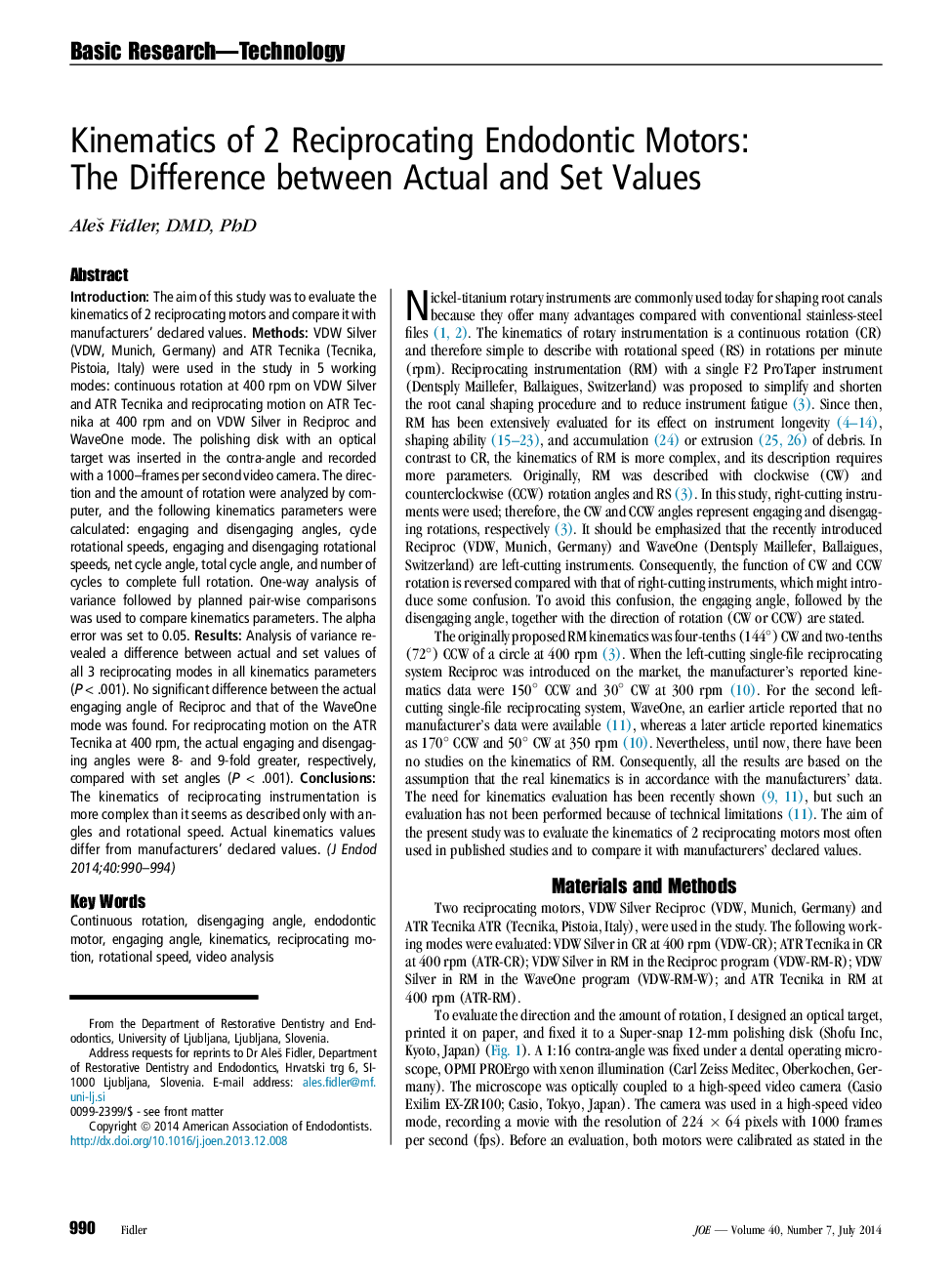| Article ID | Journal | Published Year | Pages | File Type |
|---|---|---|---|---|
| 3146824 | Journal of Endodontics | 2014 | 5 Pages |
IntroductionThe aim of this study was to evaluate the kinematics of 2 reciprocating motors and compare it with manufacturers' declared values.MethodsVDW Silver (VDW, Munich, Germany) and ATR Tecnika (Tecnika, Pistoia, Italy) were used in the study in 5 working modes: continuous rotation at 400 rpm on VDW Silver and ATR Tecnika and reciprocating motion on ATR Tecnika at 400 rpm and on VDW Silver in Reciproc and WaveOne mode. The polishing disk with an optical target was inserted in the contra-angle and recorded with a 1000–frames per second video camera. The direction and the amount of rotation were analyzed by computer, and the following kinematics parameters were calculated: engaging and disengaging angles, cycle rotational speeds, engaging and disengaging rotational speeds, net cycle angle, total cycle angle, and number of cycles to complete full rotation. One-way analysis of variance followed by planned pair-wise comparisons was used to compare kinematics parameters. The alpha error was set to 0.05.ResultsAnalysis of variance revealed a difference between actual and set values of all 3 reciprocating modes in all kinematics parameters (P < .001). No significant difference between the actual engaging angle of Reciproc and that of the WaveOne mode was found. For reciprocating motion on the ATR Tecnika at 400 rpm, the actual engaging and disengaging angles were 8- and 9-fold greater, respectively, compared with set angles (P < .001).ConclusionsThe kinematics of reciprocating instrumentation is more complex than it seems as described only with angles and rotational speed. Actual kinematics values differ from manufacturers' declared values.
